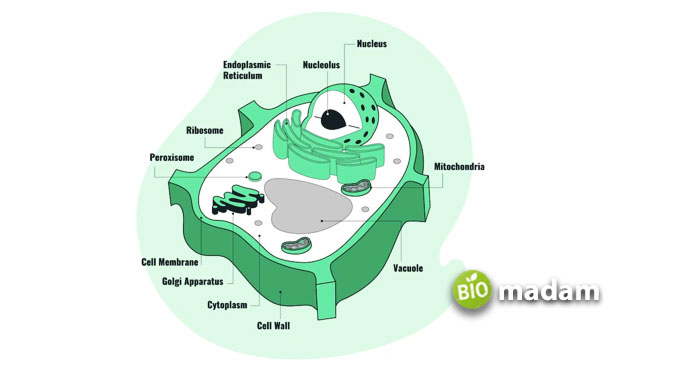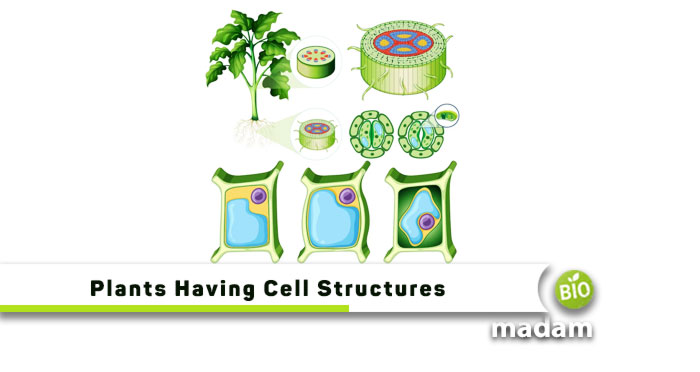Plants are autotrophic organisms essential to our habitats and ecosystems. They are the producers in the food chain besides algae, archaea, and some bacteria. Plants and animals are among the two largest kingdoms but have unique characteristics. Thus, their structures and functions vary significantly. While animals have plasma membranes, people often wonder, “Do plants have plasma membranes?”
Well, this article brings you the answer to this question and related queries. Keep reading to know if plants have plasma membranes.
What is the Plasma Membrane?
The plasma membrane is the outermost membrane of any cell that separates the internal environment from the external. The plasma membrane comprises a semi-permeable phospholipid membrane enabling the movement of molecules from the cell’s inside to the outside and vice versa. However, this membrane is highly selective and only allows particular molecules to pass through.
Functions of the Plasma Membrane
The plasma cell membrane has numerous functions in a plant cell. Besides acting as a barrier between the outer and inner environment of a cell, it performs the following functions:
- It provides support and shape to the cell.
- The plasma membrane protects the cell from harmful elements entering it.
- It facilitates the movement of important molecules into the cell.
- The cell expels toxic materials with the help of the plasma membrane.
- The plasma membrane contains protein pumps that allow molecules to pass through, thus increasing interaction with other cells.

Do Plants Have Plasma Membranes?
Now that you know the plasma membrane’s functions, it is time to answer the big question, “Do plants have plasma membranes?”
Yes, plants also have a plasma membrane like animals, fungi, and other cells.
The plasma membrane performs the same functions in plant cells as in animal cells. However, it does not primarily contribute to providing shape and support to plant cells.
Here the plasma membrane represents the overall cell membrane of a plant cell. Besides this, there is another membrane called the cell wall that surrounds and provides shape to the entire plant cell.
Plasma Cell Membrane Vs. Cell Wall in Plants
The plasma cell membrane is a semi-permeable membrane responsible for maintaining the inside environment, while the cell wall in plants keeps the plant in shape and provides extra support. Both are also different in structure and composition, allowing them to perform specific functions.
Some of the major differences between the plasma membrane and cell wall in plants are:
| Characteristics | Plasma Membrane | Cell Wall |
| Presence in Animals | Present | Absent |
| Composition | Lipids, proteins, and carbohydrates | Chitin |
| Visibility | Electron microscope | Light microscope |
| Structure | Thin layers | Thick layers |
| Thickness | Stays the same | Grows with time |
| Permeability | Semi-permeable | Completely permeable |
| Cell Type | Living | Non-living |
| Metabolic Activity | Active | Inactive |
Similarities between Plasma Cell Membrane and Cell Wall
Besides the significant differences, plant cell wall and plasma membrane also have a few features in common, including:
- They provide shape to the cell.
- These membranes offer rigidity and support to the cell.
- The plasma membrane and cell wall in plants protect the cell from the external environment.
- They regulate the movement of molecules across the cell.
Are plasma and Cell Membranes Different?
The plasma membrane is a common name for the cell membrane that encloses the different organelles within the cell. The cell membrane or plasma membrane acts as a barrier between the cell’s internal organelles and outer environment. It is present in all cells, including animals, plants, fungi, algae, bacteria, etc.
The cell membrane is one of the most important components of the cell as it allows the passage of specific molecules needed for the cell’s functioning and prevents others. It saves the cell from pathogens by filtering unwanted substances. The membrane is a part of both eukaryotic and prokaryotic cells.
The Bottom Line
Plant and animal cells have unique structures, and if you wonder, “Do plants have plasma membranes?” They do. Plant cells have a plasma or cell membrane like all other prokaryotic and eukaryotic cells. It protects them from the environment and allows the passage of only selective molecules. However, plants also have a cell wall outside the plasma membrane to provide better rigidity and strength to the cells.
FAQs
Do plants have a cell wall?
Yes, plants, fungi, algae, and most prokaryotes have a cell wall that protects them from the environment, providing additional support for maintaining structure and rigidity.
What kind of membrane do plants have?
Plants have different membranes, including nuclear membrane, cell membrane, and the cell wall. The cell membrane allows the selective movement of molecules across the cell, whereas the nuclear envelope performs the same function regarding the nucleus. The cell wall acts as an extra supportive layer on the outside. Furthermore, mitochondria and chloroplasts also have double membranes.
Are plant cell membranes fully permeable?
The plant cell membrane is a semi-permeable membrane like the animal cell membrane. However, the cell wall is fully permeable to enable the movement of solute and solvent molecules across the cell.
Why do plants need a plasma membrane?
The plasma membrane is critical in transporting solutes in and out of the cell in plant cells. It also contributes to sensory transduction, sensing, and initiating cellular responses to the changing environment.
Does every organelle have a plasma membrane?
All organelles do not have a plasma membrane, though it protects all the organelles within the cell. However, some organelles, like mitochondria, chloroplasts, the nucleus, the Golgi Apparatus, etc., have membranes, while others, like centrosomes in plant cells, ribosomes, and centrioles, are non-membrane-bound.

Anna has completed her degree in Pharmacy from the University of Hawaii. She is serving as a research assistant in a pharmaceutical company. She had a great interest in writing blogs, traveling to different parts of the US, and trying delicious recipes in her spare time.

